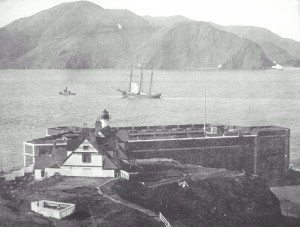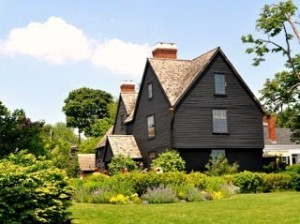Lisa Niver's Blog: We Said Go Travel, page 477
August 11, 2013
San Francisco For The Freeman
My mother was born in 1926 to immigrant parents and was the first girl in our family to be born an American citizen and a resident of the San Francisco.
I had lived in the San Francisco bay area my whole life and not once realized the freedom and opportunities that were at my feet. The politicians have not only preserved the historical beauty that makes this port city San Francisco one of the most visited places in the United States but they have also preserved the rights for any class, as well as any nationality to have the same opportunities as any native born American, in this big diverse city.
This city should be known more for its promise of independence as it has a name that says independence, San Francisco means “Free Frenchman”. My family was one of the many immigrant families who flocked to America, who had been offered opportunities that were still new liberties to United States citizens and the immigrants in the U.S.. They exercised their freedoms by running hotels and restaurants in the well to do society in the city and did well for themselves in San Francisco during a hard time for America.
The name San Francisco is shared with my grandfather whose name is Francisco. He lived and worked there in the 1920’s, with my grandmother, the matriarch and head of the household. Over the years, I had heard about my grandfather and grandmother’s business. My mother remembers her young life, as a blessed one, and one of comfort that not every one of the same nationality were so fortunate to have such financial independence. My family ran hotels and restaurants in San Francisco, CA for years and did so well that my mom felt like one of the elite guests they served most of the time.
The city of San Francisco was visited by many foreigners that came here to try and see if they would be one of the bigger partakers in the golden promise of riches during this young city’s pioneering days. The city still possesses that feeling of a promise for financial freedom. See its tall infrastructures that are blended well with the older historic buildings that make it a most unique city design. It has much rich historic architecture that serves as proof of San Francisco’s triumph over a time of depression to a lucrative state.
It is one of the prettiest preserved places in the world to visit, you might want to move there and try to exercise your own independence. Try to take advantage of the Embarcadero business section of the city that is one of a kind when it comes to statements of prosperity. It has a history of mixed business persons without prejudice which is San Francisco’s statue of liberty without the statue. Check out the Moscone Center where the big conventions are held. Some of the most popular sites that show the diversity in culture are Chinatown to catch the Chinese New Year’s Parade, Japantown, Columbus and Green St, Huntertown with The Royal Family’s own manufacturering plant the Estes Inc. company, and Ghirardelli Square Chocolates, which is now on the national register of Historic Places. The city still has a well told history through museums where you can take in the knowledge of the founders, some matriarchs in the merchant businesses like my grandmother.
San Francisco does speak for itself and definitely one to be explored by anyone that loves a one of kind experience. Not far off from this special city are naval weapon centers and retired ships that can be seen if you partake in the boat trips that are a great addition to San Francisco’s history and reminder of why the city’s multi cultured residents and others can enjoy freedoms in the first place as well as continue to live free.
I am proud that my family shared any memories in this city and had the chance to enjoy these freedoms as a minority like a lot of other present day San Franciscans. If the traveler looks closely and take a little time on their trip to San Francisco CA, they may really be able to appreciate that San Francisco’s colorful population is not by chance. The aromas from the ports where our service men once came home after securing our freedoms, say it all, unchanged and changing ,you might agree San Francisco is deserving of this message of true independence that has always been offered by this much loved American port city.
About the Author: Michele R: I am a former emergency vet tech from the San Francisco Bay Area. I moved to Kentucky to give my horses the best opportunity as I grew up with horses, race horse farm my playground. I chose to write and play with my product ideas as I love to create. FInd me on Writers Café as St Phoenix. I do look forward to writing as my profession.
The post San Francisco For The Freeman appeared first on We Said Go Travel.
August 10, 2013
Sky Symphony in Fairbanks, Alaska
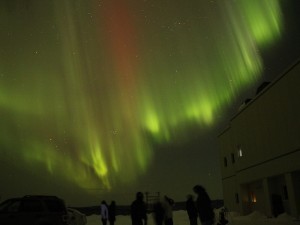 I was standing on a snow-crusted field outside of Fairbanks, Alaska staring at the dancing shimmer of lights, the Aurora Borealis, in the nighttime sky. The lights spoke directly to me. They moved, surrounded, caressed, freed me from my body, then invited me to join their cosmic ballet.
I was standing on a snow-crusted field outside of Fairbanks, Alaska staring at the dancing shimmer of lights, the Aurora Borealis, in the nighttime sky. The lights spoke directly to me. They moved, surrounded, caressed, freed me from my body, then invited me to join their cosmic ballet.
I was overwhelmed. Tears of joy iced my eyelashes with sparkly crystals in the frigid air. My feet were firmly planted on the icy snowpack, but I was alone and fearless in the sky lifting higher and higher riding on the dips and peaks of light.
My husband, Larry, and I visited Fairbanks in February. February in Fairbanks is not tourist season. Most Southern Californians like us, who shiver and moan when the temperatures fall below 50°, are not happy to learn that, here in Fairbanks, it was a warm day in February if the thermometer edged up to 0°. That fact is enough to keep most tourists away.
Fairbanks hosts a spectacular, championship World Ice Art competition in February, but that was not the goal of our visit. We wanted to see the Aurora Borealis, the Northern Lights. Viewing the aurora is best done on dark, clear nights from 12am to 3am…no moon, no clouds, no city lights, and no residual daylight. Each evening we dressed carefully for our adventure fumbling with unfamiliar layers of sweaters, long underwear, fleece, down and heavy boots feeling like kids in our bulky snowsuits as we stuffed ourselves into the car. The first two nights were duds, but on the third we hit pay dirt.
We drove to Poker Flats, a University of Alaska research facility located north of Fairbanks. This isolated campus resembled a moonscape, pockmarked with dull groups of grey block buildings, military-like antennas and geodesic domes scattered along the heavy layer of snow next to the road. It was midnight when our car entered a security gate and drove to a building on top of the hill. We entered. Then zigged and zagged through the mazes of an institutional building, down nondescript hallways, metal stairways and doors until we stood in directly in front of our final destination-another unpromising set of heavy, grey metal doors.
I shot my husband an impatient look, “What is this?” His eyes silently communicated, “Just wait it will be okay.” I yanked the knob. The door opened to flowing, red velvet blackout curtains. The vibrant, crimson color and lush fabric of the closed curtains with its’ hanging pullcord enticed like an elaborately wrapped gift.
I slowly opened the luxurious fabric, blinked and allowed my eyes to adjust to a darkened room. Then, I tentatively stepped inside. Before me was a sanctuary, framed on three sides by floor–to-ceiling windows looking out over the curved star-studded horizon. Comfy, old sofas and cushiony chairs filled the area. A decanter of brandy and some glasses rested on a small table. A quiet “Ahh” escaped my lips, and I reached for my husband’s hand. I had just unwrapped a most spectacular present. We settled in and anticipated our evening’s entertainment.
There was not long to wait before a green glow warmed the blackness and began to throb in intensity. A shout of, “Outside everyone.” We dashed through metal doors, down hallways and stairs, and out to the 20° below zero, snowy icepack. There were ten of us yelling and pointing, but I stood alone. My heart drummed with the excitement of what was to come. It did not disappoint. The show began.
Auroral Sky Symphony
Filmy curtains with green-fringe, tipped with red move rapidly across the horizon. Unexpectedly, they wrap me in their embrace. Breathtaking-heart-stopping moments, enveloped in a celestial dome of lights. Beckoning me to touch the crown then receding to the background orchestra of stars and arc. Now, the symphony proceeds more slowly, gently guiding with subtle transitions. The heavenly arc recreates to form four neon green bands that hang in silent anticipation.
My earthbound soul observes the deception of graceful simplicity in this evening’s performance. Mounds of whipped cream electrons burn even brighter above. Pieces fold in on itself; a chiffon scarf blowing in a gentle breeze then slowly moving further away. My auroral sky music recedes; a diffusion of green light fading to black sky and stars. A standing ovation.
My heart screams “ENCORE”; there is no more. Reflecting back on this experience, I need only to close my eyes to revisit the image of those magical, few moments of cosmic freedom. When anxiety, fears, or negativity threaten to lock down my spirit, I breathe deeply and feel the joy and independence of dancing in the sky with the Northern Lights.
About the Author: Susan Miller is a retired Speech Pathologist living in Los Angeles California with her husband Larry. She enjoys travelling, hiking, swimming, and writing as well as the freedom and time to do whatever she wants now that her kids are grown. Find her on Facebook.
The post Sky Symphony in Fairbanks, Alaska appeared first on We Said Go Travel.
America: Finding the Center of Two Revolutions
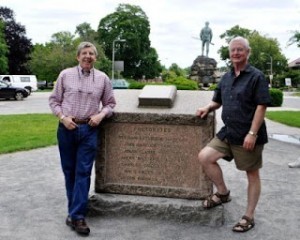 Bill and I have been RVing across North America, free to be where we want to be, do what we want to do. Concord, Massachusetts was not part of our itinerary but the Millers, Bills friends, invited us to visit with them. Am I glad we did! Doug showed us how the city was the center of two American revolutions, the political revolution that ended in American independence and the literary revolution that influenced the mindset of mid-1800 America, leading to the Civil War and the abolition of slavery.
Bill and I have been RVing across North America, free to be where we want to be, do what we want to do. Concord, Massachusetts was not part of our itinerary but the Millers, Bills friends, invited us to visit with them. Am I glad we did! Doug showed us how the city was the center of two American revolutions, the political revolution that ended in American independence and the literary revolution that influenced the mindset of mid-1800 America, leading to the Civil War and the abolition of slavery.
The Political Revolution
The Minutemen National Historical Park links the cities of Lexington and Concord, Massachusetts on a trail of significant events surrounding the start of the American Revolution. Paul Revere took a ride on the midnight of April 18, 1775 to warn the Concord militia of the impending arrival of British troops. The lantern from the Old North Church would signal, ‘one if by land, two if by sea’.
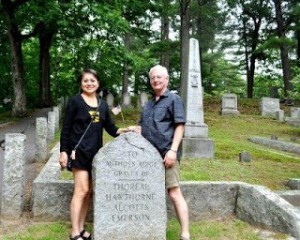 The British troops, numbering 700, proceeded to Lexington from Boston. Their mission was to retrieve the cannons being held in Concord. At Lexington they quickly scuttled the rag-tag colonial militia. But around 400 minutemen (in a minute they can be ready for battle) were assembled in Concord, having been alerted. On April 19, 1775 at the North Bridge, the ‘shot heard round the world’ was fired.
The British troops, numbering 700, proceeded to Lexington from Boston. Their mission was to retrieve the cannons being held in Concord. At Lexington they quickly scuttled the rag-tag colonial militia. But around 400 minutemen (in a minute they can be ready for battle) were assembled in Concord, having been alerted. On April 19, 1775 at the North Bridge, the ‘shot heard round the world’ was fired.
The news quickly spread to the surrounding towns and the colonists’ ranks swelled to 20,000. They quickly drove the British back to Boston. More than 250 British soldiers and less than 100 colonists lost their lives. The fighting then resumed in Boston and on June 17, 1775, The Battle of Bunker Hill gave the colonists an astounding victory, pushing the British further south. The cannons were never found.
The war lasted a few more years but on July 4, 1776, the Americans declared their independence. Then they went through a renaissance. Concord, with Cambridge to the southeast and Salem to the east became the seat of excellence in education and literary works in the mid-1800s. Five great American writers, the Concord Quartet and Louisa Alcott, lie together in eternal peace at Author’s Ridge in the Sleepy Hollow Cemetery. That evoked wondrous feelings in the fledgling author that I am.
The Concord Quartet is composed of: Ralph Waldo Emerson (1803-1882, An American Scholar, Nature), essayist and philosopher, Henry David Thoreau (1817-1863, Walden, Civil Disobedience), philosopher and naturalist, Amos Bronson Alcott (1799-1888), educator, and Nathaniel Hawthorne (1804-1864, The Scarlet Letter, House of 7 Gables), novelist. Together, they fanned the ideals of individual liberty and equality, heavily influencing the abolitionist sentiment in the North. They also greatly influenced Amos’ daughter Louisa May (1832-1888, Little Women) towards becoming a great author herself.
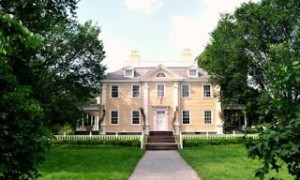 In Cambridge, we visited Harvard University, an Ivy League school established in 1636. It was named after its first benefactor, John Harvard, who gave the school his entire collection of 400 books. Henry Wadsworth Longfellow (1807-1882) served as a professor there until he retired into fulltime writing, making Paul Revere an icon with his poem, ‘Paul Revere’s Ride’. He was privileged to live in the House that Washington used as headquarters during the initial stages of the war.
In Cambridge, we visited Harvard University, an Ivy League school established in 1636. It was named after its first benefactor, John Harvard, who gave the school his entire collection of 400 books. Henry Wadsworth Longfellow (1807-1882) served as a professor there until he retired into fulltime writing, making Paul Revere an icon with his poem, ‘Paul Revere’s Ride’. He was privileged to live in the House that Washington used as headquarters during the initial stages of the war.
This house is right beside the campus of Radcliffe, formerly a renowned university for women and now part of Harvard. I wanted to see the campus, just like Bill wanted to see Yale, because I was offered an undergraduate scholarship there, after completing with honors my HS scholarship from American School in the Philippines. However, my mother could not raise enough funds for living expenses and felt it was just too far away. I went on to a scholarship in the University of the Philippines instead.
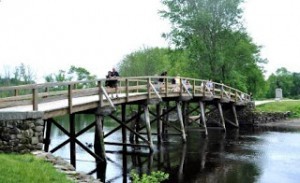 In Salem, we were surprised to see not just museums, statues, and memorials of the Salem Witch Trials of 1692. Nathaniel Hawthorne was born in Salem. His birth home was relocated to a spot near the only living colonial home in North America, the House of Seven Gables, his inspiration for the classic novel of the same name. It is now listed under the National Register of Historic Places.
In Salem, we were surprised to see not just museums, statues, and memorials of the Salem Witch Trials of 1692. Nathaniel Hawthorne was born in Salem. His birth home was relocated to a spot near the only living colonial home in North America, the House of Seven Gables, his inspiration for the classic novel of the same name. It is now listed under the National Register of Historic Places.
Our visit with the Millers turned out to be much more than a visit with friends. Concord will now be forever etched in my mind. The outcomes of its two revolutions now give Bill and me the freedom to roam around the vastness of this land and to enjoy full equality in our partnership. It also gave me the inspiration to try to be part of an ever present literary revolution. Hopefully, what I write will be enough payback for the good education I was given, the opportunity to rise out of poverty, and be an American!
About the Author: After stints as CEO of Philippine pioneers in information technology, Carol migrated to the US to take care of grandkids, become a business counselor in SCORE, and serve as adjunct professor in three schools of higher learning in Seattle. She and BIll are on a 4-year cruise of North America in an RV. Read her blog.
The post America: Finding the Center of Two Revolutions appeared first on We Said Go Travel.
Costa Rica: The Journey to Freedom
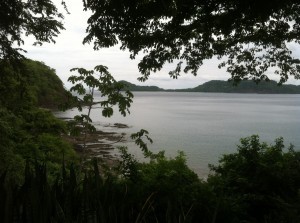 Deep in the jungle in Costa Rica, climbing high above the treetops, all that lies before us is lush vegetation for miles and miles as thin fog rolls through. A light breeze brushes my cheek, as the chatter of monkey echoes in the distance, a natural musical. This is where I feel free, above the chaos, in the heavens where clouds walk and rain dances. The purest air you will ever taste, and the most breath-taking silence you will ever know.
Deep in the jungle in Costa Rica, climbing high above the treetops, all that lies before us is lush vegetation for miles and miles as thin fog rolls through. A light breeze brushes my cheek, as the chatter of monkey echoes in the distance, a natural musical. This is where I feel free, above the chaos, in the heavens where clouds walk and rain dances. The purest air you will ever taste, and the most breath-taking silence you will ever know.
Costa Rica is the devastation of the modern world, as a third world country. By definition, a third world country is meant to be ridden in poverty and drenched with sadness. What I witnessed was entirely the opposite. Though they had little to give in material goods, they had something else that each local provided: joy. The Costa Rican people, also known as “Ticos”, gave the gift of happiness with a simple smile.
To be a traveler, it is essential to discover the beauty of the land, to find the marvels never seen before, to speak with a people never asked the reasons why they dance. The slope of the lush mountains to the soft grasses of the fields below to the people living in a world modernizing around them but fail to notice. Sometimes we forget. We forget simplicity, we forget a world beyond media, we forget who we are and where we began. Remembering the wind whistling through the trees, or the ocean rolling in across a blanket of white sand. But the people are the greatest remembrance of all, their passion for life.
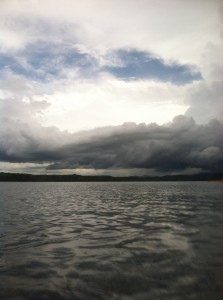 The world is not only defined as the land and the people but also the oceans. The color of the open sky, glistening in the sun. Floating in the cooling Costa Rican waters, below the surface, a silence encases the noise of the outside world. Thoughts race through the mind, and out of them climbs a longing for peace.
The world is not only defined as the land and the people but also the oceans. The color of the open sky, glistening in the sun. Floating in the cooling Costa Rican waters, below the surface, a silence encases the noise of the outside world. Thoughts race through the mind, and out of them climbs a longing for peace.
Harmony amongst the creatures who dwell in the depths and amongst the visitors who dare to venture into the watery world. The weight falls from my shoulders as I just let the water rock me back and forth. And in this moment I am free.
I guess freedom is not always the most amazing discovery but it does find its way into your spirit. A sudden burst of energy propels and an utter feeling of flight; this is how I describe freedom. Not with a liberation of stress but with a silence. A silence that envelops your soul and allows you to see yourself. For a single moment, the world goes quiet and all you can hear is the sound of your breath: in and out. I found my place and personal freedom in the humble country of Costa Rica. The breathtaking scenery and the deep blue ocean called to me, spoke to me in a gentle voice and lifted me above the confines of modern society. It is not the final destination that defines you but the journey you take. Allow yourself to wander through life and surely there will be a final destination awaiting your arrival.
About the Author: My name is Morgan Thompson and I am a second year student at the University of California, Santa Cruz. I am currently studying biology and psychology in hopes of pursuing a career in Veterinary Medicine. I believe that travel is the best way to experience different cultures and understand our world. Find her on Facebook.
The post Costa Rica: The Journey to Freedom appeared first on We Said Go Travel.
August 9, 2013
Mombasa, Kenya: My Secret Safe Haven
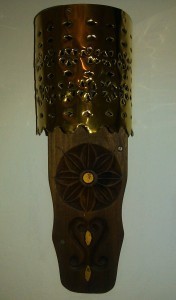 MOMBASA, KENYA: MY SECRET SAFE HAVEN
MOMBASA, KENYA: MY SECRET SAFE HAVEN
When I was younger, I never truly appreciated the beauty of travelling and seeing new places, whether it was in my home country Kenya, or anywhere else across the globe. However, as I became older, I began to see things in a new perspective and gained a newfound love for travelling and all the things that came with it. So far, I have visited six countries, two in Africa and four in Europe, however, I must say my favourite would have to be Mombasa which is located in the country that I will always love no matter what…Kenya.
I know most people may consider it cliché when one declares their home country as the place they can truly feel free but once one visits Mombasa, they will fall deeper and deeper in love with every passing day. Why do I say that, you ask? Well, for starters, the people there are very friendly and welcoming to visitors and strive to ensure your stay is comfortable, regardless of how long you will be staying there. They are approachable, have a permanent smile on their faces and always lend a helping hand in case you need it,so you can always feel free to walk over to a complete stranger and have a productive conversation with them without fearing the worst.
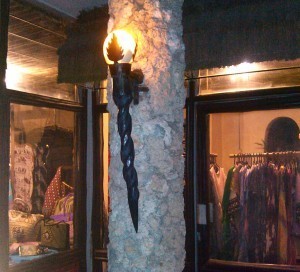 Secondly, one is free to wear whatever they wish as compared to other regions. In Nairobi, the city I reside in, one has to be very conscious about the way they dress because idle people will always make the most of it and gossip their hearts out, while the rest of the people will glare and make horrible facial expressions while scrutinizing the whole outfit.
Secondly, one is free to wear whatever they wish as compared to other regions. In Nairobi, the city I reside in, one has to be very conscious about the way they dress because idle people will always make the most of it and gossip their hearts out, while the rest of the people will glare and make horrible facial expressions while scrutinizing the whole outfit.
This is because most people have been raised in strict households and over time, they gain a new mentality that real beauty should be hidden under a thick layer of clothing, which gives them a negative perception of those who wear clothes that accentuate their God-given physique.
However in the coast (Mombasa), one can dress however they please and get away with it by using the intense heat and humidity as an excuse! This also gives one the opportunity to soak up the sun and get a tan if they so wish without looking out of place and without worrying about what the people around will think.
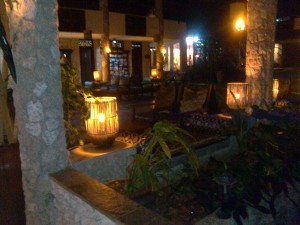 Additionally, the architecture there allows ones’ mind to acquire a newfound independence and wander into realms it has never been. In the coast, there is a mixture of characteristics from different countries reflected in the structure of buildings and each one transports the explorer to a different place and time and allows them to be a part of that time, even if it is just for a moment.
Additionally, the architecture there allows ones’ mind to acquire a newfound independence and wander into realms it has never been. In the coast, there is a mixture of characteristics from different countries reflected in the structure of buildings and each one transports the explorer to a different place and time and allows them to be a part of that time, even if it is just for a moment.
The carved works, metallic pieces and engravings all represent a unique theme or attribute of the country they have originated from and invite the explorer to be a part of the journey through time and space.They also incorporate nature in their structures and ensure that it blends in with the buildings so that they become one…and which place is more free than nature itself?
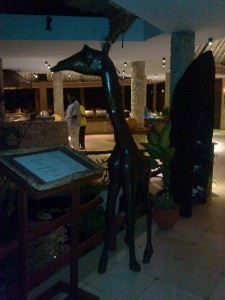 Lastly, the most liberating thing about Mombasa is its beautiful, white, sandy beaches and the vast expanse of the blue ocean. When one sits on the rocks along the shore, they can inhale the fresh air and absorb the salty scent of the blue waters and feel the heat from the sun tickling their skin as the wind blows, gently stroking the pores on their skin.
Lastly, the most liberating thing about Mombasa is its beautiful, white, sandy beaches and the vast expanse of the blue ocean. When one sits on the rocks along the shore, they can inhale the fresh air and absorb the salty scent of the blue waters and feel the heat from the sun tickling their skin as the wind blows, gently stroking the pores on their skin.
There is no time that I felt more free than when I was sitting on the rocks along the shore, gazing at the water and watching the sparkles from the sunlight dancing on the surface of it.At that moment in time, I forgot my worries, my problems, dreams and fears and finally, for the very first time ever, I felt like I was honestly and truly at peace with nature.
About the Author: Linda Kemoli, the writer of the article, is a nineteen year old lady, currently pursuing a degree in interior design. She is a visual artist who loves creating beautiful art pieces that will inspire those who look at them. She is in the process of setting up her own web page so readers should be prepared to take a journey with her to places unknown.
The post Mombasa, Kenya: My Secret Safe Haven appeared first on We Said Go Travel.
Kyrgyzstan: Living with Nomads
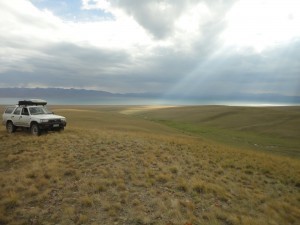 Atop the pointed edge of a rocky crag I squinted against the bright summer sun, straining to make out the blurred outline of the vast inland lake that shimmered in the distance. Behind me a belt of tremendous cliffs hung with jutting rocks diminished the 3,100 metre altitude that I was at.
Atop the pointed edge of a rocky crag I squinted against the bright summer sun, straining to make out the blurred outline of the vast inland lake that shimmered in the distance. Behind me a belt of tremendous cliffs hung with jutting rocks diminished the 3,100 metre altitude that I was at.
Partly because of the late afternoon sun that was streaming through the clouds and partly because of the distance I could barely make out the tiny white specks and the moving black dots on the ground below me, but knowing what they were I could still hardly believe where I was.
There I was looking out over Kyrgyzstan from my seemingly private vantage point next to Song Kol, and down in one of the yurts that from where I was standing was nothing but a white blemish on the landscape, a bed was set up for me. For the past couple of days we’d been part of this beautiful scene, experiencing the lives of the nomads who were now just black dots moving around in the distance; they had welcomed us into their homes, given us horses to ride and shared their meals with us. As if this wasn’t exceptional enough already, I couldn’t help but think about all the places that we’d seen on the way, on our drive from Australia to Kyrgyzstan.
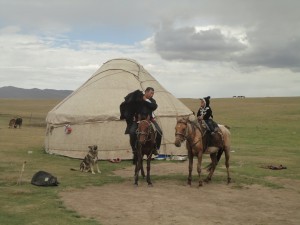 Very few people in the world have the opportunity to abandon “real life” for a year and drive across the world. In some cases it might be because of disadvantage or culture, for others it could be a result of career priorities or family circumstances, and sometimes it will just be out of sheer laziness, but together with three good friends I had worked hard to make this opportunity for myself and had grasped it with both hands.
Very few people in the world have the opportunity to abandon “real life” for a year and drive across the world. In some cases it might be because of disadvantage or culture, for others it could be a result of career priorities or family circumstances, and sometimes it will just be out of sheer laziness, but together with three good friends I had worked hard to make this opportunity for myself and had grasped it with both hands.
Over the past 149 days my travel companions and I had made our way through some of the most remote and untouched areas of Eastern and Central Asia, and not even half way through our journey I considered where we were, how we had gotten there, and all the places and people in between. As I stood there at Song Kol it felt as if I wasn’t just looking over a lake and the surrounding mountains, but as if I was looking out over the whole world.
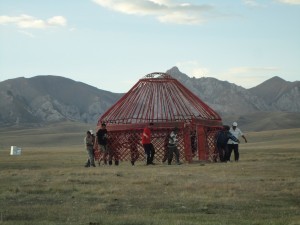 My companions gradually re-emerged from their own exploration of the crevices and knolls and we returned to Trevor, our trusty and much-loved Toyota 4Runner which was enabling this epic journey.
My companions gradually re-emerged from their own exploration of the crevices and knolls and we returned to Trevor, our trusty and much-loved Toyota 4Runner which was enabling this epic journey.
Bouncing and jerking our way back across the dried river beds and sharp ditches we drove towards the group of white flecks on the horizon that our yurt was part of, watching with fascination as the tiny white specks became yurts and the black spots became horses and people. Peculiar circles of dead grass punctuated the landscape where yurts had once stood and we even had the pleasure of witnessing the relocation of one. The frame was literally picked up by a group of people and carried to its new location, the felt covering carefully removed and lugged across separately, piece by piece.
 Inside the yurt that was our temporary home, I lay back on a pile of patterned rugs and sleeping mats and from the sunlight streaming in through the uncovered circle at the pinnacle of the felt construction, I took mental photographs of this exquisite and unique scenario.
Inside the yurt that was our temporary home, I lay back on a pile of patterned rugs and sleeping mats and from the sunlight streaming in through the uncovered circle at the pinnacle of the felt construction, I took mental photographs of this exquisite and unique scenario.
The wooden frame, often painted but in this case left its natural colour, was held together by a variety of brightly coloured ropes and straps, over which sections of handmade felt were layered, secured to the frame by braids. Beautiful velvet quilts and striking tapestries covered the inside walls, the bedding that I was lying on and the small poo fire stove (essentially the same as a wood stove, except the fuel of choice was cow poo) the only pieces of furniture.
Peering up into the circle of sunlight directly above me I could just make out the pattern that all yurts have in common, the feature so distinguishing to Kyrgyzstan as a country that it is the emblem on their national flag. At the point at the very top of every yurt, where all the sides of the wooden frame meet, is a circle with three crosses through the centre.
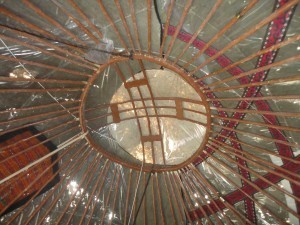 We were so privileged to have had such an insight into the lifestyle of one of the few remaining nomadic communities in the world, and if the freedom and sense of independence that comes with travel didn’t hit us there, I can’t imagine a place where it would.
We were so privileged to have had such an insight into the lifestyle of one of the few remaining nomadic communities in the world, and if the freedom and sense of independence that comes with travel didn’t hit us there, I can’t imagine a place where it would.
About the Author: Eilidh Robertson: Originally from Scotland I now live in Australia, and amidst a variety of jobs my adult life thus far has revolved around travelling. I’m doing my best to experience the untouched corners of the world as much as possible and my most recent trip was an overland roadtrip by car from Australia to Scotland. Find me on Facebook or check out my blog.
The post Kyrgyzstan: Living with Nomads appeared first on We Said Go Travel.
Saving Large to Morocco with Discount Airfare
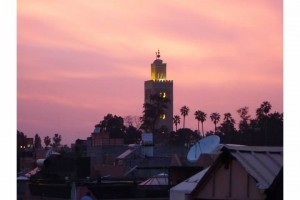 Since I was a youngster, I dreamed of one day visiting Morocco. Towns and cities with exotic names such as Rabat, Casablanca, and Fez beckoned me from across the Atlantic Ocean. In 2008 when I researched direct flights from Los Angeles to Casablanca, Marrakesh, and Rabat, I noticed that most flights went via either London or Madrid and cost well over $1,200usd in the budget economy range. My wife’s friend who had visited Morocco on two occasions informed us how we could save a substantial amount of money. Rather than purchasing a ticket through to Morocco, the key was to purchase a flight to nearby Madrid and then buy a Ryan Air flight to a desired locale in Morocco. With this information in hand, we saved literally hundreds of dollars and at the same time enjoyed two fruitful weekends in Madrid. The flight per person from Los Angles to Madrid cost roughly $600usd and the additional Ryan Air ticket added on only another $80usd per person; our total savings was over $1,000usd.
Since I was a youngster, I dreamed of one day visiting Morocco. Towns and cities with exotic names such as Rabat, Casablanca, and Fez beckoned me from across the Atlantic Ocean. In 2008 when I researched direct flights from Los Angeles to Casablanca, Marrakesh, and Rabat, I noticed that most flights went via either London or Madrid and cost well over $1,200usd in the budget economy range. My wife’s friend who had visited Morocco on two occasions informed us how we could save a substantial amount of money. Rather than purchasing a ticket through to Morocco, the key was to purchase a flight to nearby Madrid and then buy a Ryan Air flight to a desired locale in Morocco. With this information in hand, we saved literally hundreds of dollars and at the same time enjoyed two fruitful weekends in Madrid. The flight per person from Los Angles to Madrid cost roughly $600usd and the additional Ryan Air ticket added on only another $80usd per person; our total savings was over $1,000usd.
We arrived to Madrid where we spent the weekend roaming the city, visiting renowned museums such as the stunning Prado Museum and the Reina Sofia. We rested at the recommended Hostal Orly off Gran Vila with superb views of central Madrid at reasonably priced semi-budget rates. In Madrid we got over our jetlag so we could delve right into Morocco upon arrival.
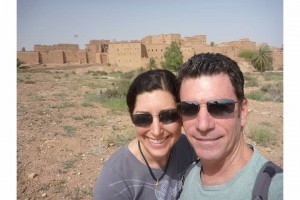 Our Ryan Air flight whisked us safely to Marrakesh where we lodged at the Jnane Mogador, a boutique converted Riad located just off Djamaa El Fna central square. On foot, we toured the Saadien Tombs near the Kasbah Mosque and the Palais Badii. After enjoying tasty local treats at the Kosy Bar, we roamed the Mellah (old Jewish Quarter) and were invited into a Synagogue on Rue Talmud Torah. That night we ate delicious Moroccan staple dishes: couscous, chicken tagine, bastilla (a filed pastry), and for dessert, sweet oranges peppered with cinnamon along Djamaa El Fna. The street food was fresh and tasty. Shopping in Marrakesh is tempting with a variety of Moroccan products from silver to carpets sold at the Gallerie Akabart El Hanafi Khalid and the Mouassine fhal Cheadmi near the Bougainvillea Café.
Our Ryan Air flight whisked us safely to Marrakesh where we lodged at the Jnane Mogador, a boutique converted Riad located just off Djamaa El Fna central square. On foot, we toured the Saadien Tombs near the Kasbah Mosque and the Palais Badii. After enjoying tasty local treats at the Kosy Bar, we roamed the Mellah (old Jewish Quarter) and were invited into a Synagogue on Rue Talmud Torah. That night we ate delicious Moroccan staple dishes: couscous, chicken tagine, bastilla (a filed pastry), and for dessert, sweet oranges peppered with cinnamon along Djamaa El Fna. The street food was fresh and tasty. Shopping in Marrakesh is tempting with a variety of Moroccan products from silver to carpets sold at the Gallerie Akabart El Hanafi Khalid and the Mouassine fhal Cheadmi near the Bougainvillea Café.
Our journey in Morocco next took us to the ancient seaside town of Essaouira with is walled medina constructed in the 18th century. Brief visits to the Oasis Flint, Ait Ben Haddou and the Todra Gorge were all worthwhile stops. Perhaps the highlight of our trip to Morocco was sleeping under the stars in a Bedouin camp outside of Merzouga as part of a two-day desert camel safari. Then we enjoyed the authenticity of Meknes and getting lost within Fez’s massive ancient medina.
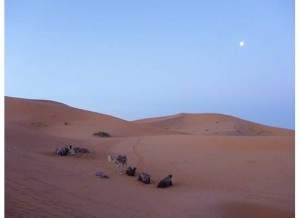 Why write now about our trip to Morocco when we went almost five years ago? We have been away for the entire 2013 year, mainly in Southeast Asia. Travelers often ask us for advice since we have been to the majority of locales that people intend to visit. They often ask us for tips; one of the best suggestions I give travelers heading to Morocco is to fly to Morocco via Madrid using Ryan Air’s services to save considerable amounts of money.
Why write now about our trip to Morocco when we went almost five years ago? We have been away for the entire 2013 year, mainly in Southeast Asia. Travelers often ask us for advice since we have been to the majority of locales that people intend to visit. They often ask us for tips; one of the best suggestions I give travelers heading to Morocco is to fly to Morocco via Madrid using Ryan Air’s services to save considerable amounts of money.
In addition to the drastic savings, we ended our holiday with a second weekend stopover in Madrid. However, this time we saw the capital city through the eyes of people from Madrid that we met at the Bedouin camp where we lodged in the Merzouga Desert. They took us out to wine bars to enjoy empanadas and other local delicacies. After a late night out, it wasn’t easy awakening to catch a flight home to Los Angeles but we had a fantastic trip.
About the Author: George Rajna, M.B.A., Masters of Science in Communications Disorders, is a bilingual speech therapist who has traveled to over one hundred countries across six continents. He composes music on the guitar and ukulele, and spent two years working in rural education for Peace Corps Paraguay. He is the co-author of Traveling in Sin. He is a blogger for the Huffington Post, JewishJournal, Technorati, The Clymb and is in print at The Himalayan Times, George is also cofounder of We Said Go Travel and a member of the Travelers Century Club. His favorite region is Southeast Asia; in particular he recommends Bagan (Myanmar), Koh Lipe (Thailand), the Angkor Temples (Cambodia), Langzhong (China), diving in Sipadan (Malaysian Borneo), and trekking in Nepal. Since July 2012, George and Lisa have been living abroad in Southeast Asia. Learn more about We Said Go Travel, Lisa and George at Wikipedia.
The post Saving Large to Morocco with Discount Airfare appeared first on We Said Go Travel.
August 8, 2013
New Mexico: Freedom On The Ground
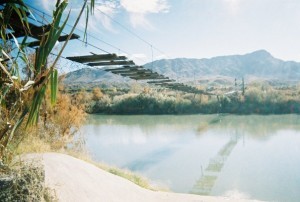 Just outside the town of Truth or Consequences, in southern New Mexico, there’s a spaceport designed for taking tourists into outer space. Called Spaceport America, the state-of-the-art facility isn’t ready for launching wannabe astronauts into the cosmos just yet. But once it is, perhaps in late 2013 or early 2014, regular folks will be able to experience spaceflight starting at $200,000 a pop. The price may sound steep, but one of the space-travel carriers, Virgin Galactic, owned by billionaire Richard Branson, already has a waiting list of 600 people.
Just outside the town of Truth or Consequences, in southern New Mexico, there’s a spaceport designed for taking tourists into outer space. Called Spaceport America, the state-of-the-art facility isn’t ready for launching wannabe astronauts into the cosmos just yet. But once it is, perhaps in late 2013 or early 2014, regular folks will be able to experience spaceflight starting at $200,000 a pop. The price may sound steep, but one of the space-travel carriers, Virgin Galactic, owned by billionaire Richard Branson, already has a waiting list of 600 people.
It’s funny to me that anyone would be willing to pay so much just to get away from home. I mean, there’s getting away from it all…and then there’s getting away from all of it. I have to wonder what experience those who have signed up for a spaceflight are expecting. What is it they seek in outer space that they can’t find here on earth? Perhaps it’s a feeling of exhilaration, of new sensations. Or maybe it’s freedom—the radical kind that comes from being completely cut off from the world you’ve always known, even if just for a few hours.
I can understand that desire, though I don’t think a person has to leave the planet to fulfill it. In fact, I know you don’t even have to leave the vicinity of Truth or Consequences, the dusty little town that neighbors Spaceport America.
In the fall of 2008 I took a month-long cross-country ride via Greyhound bus from my native Chicago through the southern and southwestern states of America. I’d just quit an office job and an apartment with the intention of spending some time traveling around the country and globe. I was on my own for this Greyhound trip. I was as excited about having no one to answer to and no schedule or wishes to follow but my own as I was nervous for my safety being a woman traveling alone. Call it a fearful freedom.
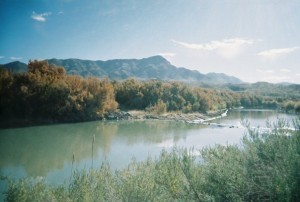 I crossed 15 states in my Greyhound journey, spending a night or two in about as many towns and cities. There were many highlights on my journey, but the one that stands out most in my mind is the time I spent in that small, old West town flanking the futuristic spaceport: Truth or Consequences.
I crossed 15 states in my Greyhound journey, spending a night or two in about as many towns and cities. There were many highlights on my journey, but the one that stands out most in my mind is the time I spent in that small, old West town flanking the futuristic spaceport: Truth or Consequences.
I chose to stop there solely because of the name. Travel is about answering whims as much as it is following dreams or seeking freedom—maybe they’re even all the same thing. It turned out the town got its name from a popular radio quiz show called Truth or Consequences that was holding a promotional nationwide contest. The little town in New Mexico won the contest and, as part of the deal, a new name for itself, changing from its original Hot Springs to Truth or Consequences—or T or C, as most local folks call it today.
Now the name of the town may have changed, but those hot springs that gave T or C its original name didn’t go away. And while I didn’t come to T or C for the springs, everyone I met at the funky trailer park turned hostel and spa where I was staying insisted I try a soak. The springs have a high mineral content and are known all around the area for their therapeutic benefits. And of course, the best one in town was run by the hostel—an open-air spring situated right on the banks of the famous Rio Grande.
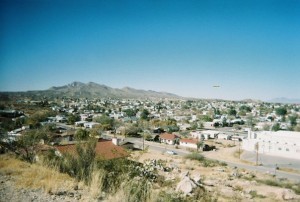 I’d been traveling for nearly three weeks. Anyone who’s ever traveled overland for long distances knows how weary and grubby it can make you feel. Even if I didn’t know it when I boarded the bus headed to T or C, those hot springs were calling me.
I’d been traveling for nearly three weeks. Anyone who’s ever traveled overland for long distances knows how weary and grubby it can make you feel. Even if I didn’t know it when I boarded the bus headed to T or C, those hot springs were calling me.
I waited until my third and final day in town, waking up early so that I might have the springs to myself. The morning was still gray as I crossed the hostel grounds to the pools. By the time I stepped into one of the pools, the sky was just beginning to take on a glow from the rising sun. I had the pools, the river, the sunrise, and the mighty Turtleback Mountain on the other side of the river, all to myself. No one else would come along for another hour. I spent that hour soaking in all the good minerals from the springs and watching the sun rise over the mountain and the river quietly run by. I think that hour melted all my traveler’s fear and anxiety away. It cost me nothing, and I didn’t even have to leave the earth below my feet. Freedom isn’t found in the farthest places. It’s found wherever you leave fear behind.
About the Author: René Ostberg is a native of Chicago and the owner of a women’s tour company, Wayfaring Women Tours . She also has a writing blog called Writing and Wayfaring . Her travel stories have been published on the Britannica Blog and the Aran Islands website blog.
The post New Mexico: Freedom On The Ground appeared first on We Said Go Travel.
Seeking Solace in the Sky
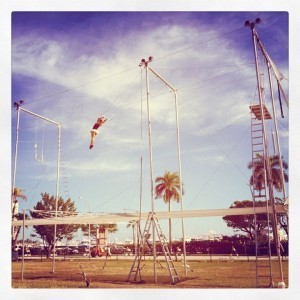 The scenery doesn’t matter. The temperature becomes obsolete. Every noise fades into the distance and the only sound I hear is the quickened thump of my heart and the rushing of the wind. The air envelopes me and thoughts become a thing of the past. There is no time to think if you are becoming one with the sky.
The scenery doesn’t matter. The temperature becomes obsolete. Every noise fades into the distance and the only sound I hear is the quickened thump of my heart and the rushing of the wind. The air envelopes me and thoughts become a thing of the past. There is no time to think if you are becoming one with the sky.
I am strong, I am focused, I am airborne.
I am free.
This is not a place for thinking. Worry and doubt and fear cannot find room to foster in a heart that is this open. The mortgage, the horrible boss, the illness, the pain — all become secondary to the primal need for freedom and the fleeting chance to be separate from absolutely everything else.
Many do not realize just how much gravity holds them down. The need to find even fleeting relief from its oppressive hand is deep seated in human nature and unconsciously sought by all.
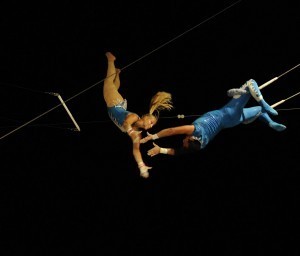 Oddly enough, the first time I experienced a real reprieve from gravity was in New York City in a large white tent. After a childhood as a competitive gymnast, a college education in theatre, and a year traveling as a tour director, I was desperately searching for a way to merge all of my widespread passions.
Oddly enough, the first time I experienced a real reprieve from gravity was in New York City in a large white tent. After a childhood as a competitive gymnast, a college education in theatre, and a year traveling as a tour director, I was desperately searching for a way to merge all of my widespread passions.
I walked into the stark and badly carpeted space with feigned confidence and stared up 30 feet to the small platform where I would soon be. As I watched, a ridiculously fit man jumped off that platform, swung out into the abyss and dismounted into the net with a complex assortment of flips and twists. A smiling instructor with a fantastic afro strapped a belt on me, rambled off a slew of directions and hooked me into a safety line to climb on up to my, as yet, unbeknownst future.
I remember very little detail from the next two hours of my first flying trapeze class.
My gymnastics background gave me an edge and I easily grasped the tricks they asked me to perform. I know that even though joy was radiating out of every inch of my being, my entire body was shaking after every turn. What has implanted itself firmly in my memory is the intense feeling of freedom and the inability to think of anything else for those few moments when you are flying through the air. At that time in my life, I was freshly heart broken, dealing with the death of a close friend, and working three jobs to pay my outrageously huge college loans and make ends meet in the big bad city. I was irritable, confused, overwhelmed and completely exhausted. In the air, none of this was able to touch me, and I soared freely, high above all my petty troubles.
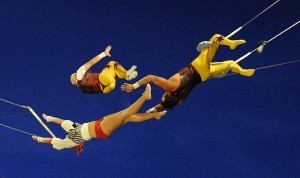 I have since gone on to make flying trapeze, and other circus arts, my career. I have travelled all over the world, flying at trapeze rigs in faraway lands, recreating that 20 seconds of airborne peace. Every trapeze has its own flavor, its own signature feeling, its own vibe, but they all provide the same freedom. In Pennsylvania, the freedom is delivered along with a healthy dose of fresh backwoods air and eagles soaring right along with you. In Seattle, the feeling comes surrounded by aged wood, rusting mechanical trolleys, and an audience on a balcony at the same level as your flight. In the Caribbean, it’s a sea of blue sky and bluer ocean with palm fronds blowing gently in the fragrant breeze.
I have since gone on to make flying trapeze, and other circus arts, my career. I have travelled all over the world, flying at trapeze rigs in faraway lands, recreating that 20 seconds of airborne peace. Every trapeze has its own flavor, its own signature feeling, its own vibe, but they all provide the same freedom. In Pennsylvania, the freedom is delivered along with a healthy dose of fresh backwoods air and eagles soaring right along with you. In Seattle, the feeling comes surrounded by aged wood, rusting mechanical trolleys, and an audience on a balcony at the same level as your flight. In the Caribbean, it’s a sea of blue sky and bluer ocean with palm fronds blowing gently in the fragrant breeze.
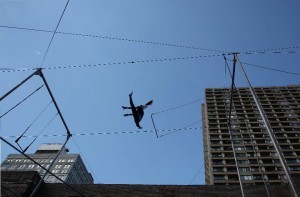 My mission in life is to grasp this opportunity at every possible moment, in every possible location. Flying through the air has become my sanity, my peace, my steady. It is not for the faint of heart. Independence is not something given to the meek. You must be willing to take the leap, to let go of the past, to experience something out of your comfort zone. You must be willing to lead an interesting life and to shed the conventional chains of normal society. You must be willing to be free.
My mission in life is to grasp this opportunity at every possible moment, in every possible location. Flying through the air has become my sanity, my peace, my steady. It is not for the faint of heart. Independence is not something given to the meek. You must be willing to take the leap, to let go of the past, to experience something out of your comfort zone. You must be willing to lead an interesting life and to shed the conventional chains of normal society. You must be willing to be free.
About the Author: Caitlyn Larsson is a wandering circus vagrant, unable to stay in one place for extended periods of time, and always on the lookout for the next amazing experience. She teaches flying trapeze and other circus arts to pay the bills, writes technical articles to fend off the college loans from her days at NYU, and performs as often as possible to feed her creative soul. Here is a link to her incredibly intermittent blog, Circus Vagrant. http://circusvagrant.wordpress.com
The post Seeking Solace in the Sky appeared first on We Said Go Travel.
Myanmar: Cows, Goats, Broken Bikes & Bagan Temple Celebrations (video)
WATCH: 28 Cows, Goats, Broken Bikes & Bagan Temple Celebrations, Myanmar
October 14, 2012 Our day on the bikes in Bagan started with a herd of goats crossing Arwathagee Road, the paved road and the dirt path then we biked through a herd of Oxen and Cows. We were on our way to the big temple: Dhamma-yan-gyi, where we saw twin Buddhas, stone tablets, and people adding gold leaf. This temple was built in three years from 1163-1165, and is similar to Ananda Temple.
Stopped at Shwe San Daw paya, which is famous for visiting at sunset. You can climb up and there is even a railing.
Our next stop was Gubyauk Gyi (Myinkaba Village) built in 1113AD. There are no photos or videos allowed inside. The interior art work is truly remarkable. A guide shared his large light with us so we could see the details.
Nan-paya Temple was not crowded at 1:30pm as it was so hot out, most days it was 40C or 104F. From the simple outside of the building you would not guess about the intricate relief work inside. This temple had damage in 1974 earthquake, the large standing Buddha outside fell down. The sandstone carvings on the inside reminded us for Angkor Wat.
Nearby at Ma-nu-ha phaya, we met a large school group, and saw large Buddhas, both sitting and lying. I heard a large popping sound and realized I had a flat tire on my bike. Some kids saw us walking our bike through Old Bagan and took us to a repair shop.
Later at Be Kind to Animals, The Moon Vegetarian restaurant near Min-o-chan-thar, hsu-taung-pyi Temple, we ate Myanmar Tomato Curry and Vegie Chipati, peanuts and tamarind flake candy and COLD WATER!! What a hot day!
This movie is from our 28 days in Myanmar (Burma) from September 28, 2012 to October 26, 2012 and our year TRIP in South East Asia, see all the videos from our trip.
Buy our memoir, Traveling in Sin, at Amazon; it is a HOT NEW RELEASE!
Traveling in Sin is a TOP TEN Hot New Release! from Lisa Niver Rajna
The post Myanmar: Cows, Goats, Broken Bikes & Bagan Temple Celebrations (video) appeared first on We Said Go Travel.
We Said Go Travel
We Said Go Travel is a global community of over sixteen hundred writers with articles from every continent.
Stories are shared with photos and video from a perspective of the transformative power of travel. We Said Go Travel has hosted live and online events as well as travel writing contests around the world. ...more
- Lisa Niver's profile
- 57 followers


